Peter Gleick: Water Lessons from Singapore
Some of the most interesting water stories are coming out of Singapore — an example of a place with serious water constraints and important political and economic incentives to address those constraints in a sustainable way. For years, Singapore has been buying water from its neighbor, Malaysia, to help satisfy the needs of around 4.5 million people. In a move with all sorts of political, economic, and environmental implications, the government of Singapore recently announced that it will not renew one of its two water agreements with its neighbor Malaysia under two water agreements, signed in the very early 1960s. This water comes at an economic cost, though a very small one — the rate paid to Malaysia is very low. But it also comes with a political cost: their dependence on Malaysia for water constrains and affects their political relationships. In the past few years, Singapore has been working hard to diversify their water “portfolio.”
Water Number: 4. Today, Singapore depends on four different sources of water: about 35% of their water comes from rainfall captured on its own limited territory, about 15% is high-quality recycled water produced by its NEWater treatment plants, 10% comes from desalinated water, and around 40% is water imported from Malaysia.
As a result of the heavy dependence on Malaysia, the Public Utilities Board (PUB) of Singapore has been working for years to do two key things: reduce the demand for water by improving efficiency and cutting waste; and expanding alternative sources of supply. California could take a lesson from these two approaches. I know that water agencies (state, federal, local, and agricultural) argue the state is already doing these things, but compared to Singapore, California’s efforts are half-hearted.
For example, Singapore is working to reduce household water use and eliminate leaks. But their household water use is already a fraction of Californians (even accounting for the state’s huge outdoor water use). The figure below shows domestic water use in Singapore, with slight, but steady improvement over the last 14 years. More importantly, however, current domestic water use there is around 155 liters per person per day, or around 40 gallons per person per day. Domestic water use in California is over 130 gallons per person per day, more than three times higher. Even California indoor water use alone is higher than all domestic use in Singapore. “Unaccounted for” water in Singapore — a measure of system leaks and inefficiencies — is at the remarkably low level of under 7 percent.
Domestic water use in Singapore from 1995 to 2009 (liters per person per day) showing improving efficiency of use.
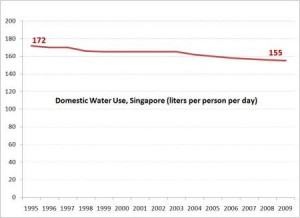
On the supply side, Singapore has long ago run into peak water limits. They are effectively tapping all of the renewable supply of rain that falls in their territory, though some small new reservoirs let them squeeze every drop out of their catchments. So their efforts to expand new supply have focused on alternatives: highly treated wastewater that is used to satisfy a wide variety of demand, and desalination.
A $2.2-billion NEWater (wastewater treatment and recycling) plant soon to open in Changi will turn wastewater into high-quality supply, adding 800,000 cubic meters per day (over 200 million gallons per day) to Singapore’s water options. Combined with four existing plants, highly treated wastewater will be capable of supplying a third of Singapore’s total needs. In 2005, a desalination plant capable of producing 30 million gallons of water a day opened, and more are being considered.
But before moving to these options, Singapore raised the price of their water. They charge $1.17 per cubic meter for the first block of 40 cubic meters of water (around 10,000 gallons) and over $1.40 per cubic meter for water use above this level, along with substantial additional conservation fees and tariffs, with targeted subsidies for the poor.
What are the lessons for other parts of the world, including California? Price water properly, collect wastewater and treat it for reuse, move more aggressively to conservation and efficiency, and consider new supply options, such as desalination when it can be done economically and environmentally acceptable manner. Instead, we’re moving toward new costly and damaging surface storage reservoirs, cutting back on efficiency programs, failing to learn lessons that could help grow more food with less water, ignoring leaks and waste in old infrastructure, and continuing to fail to meter and price water properly. Maybe Malaysia has some water they can sell us now that Singapore doesn’t need it any more.
Peter Gleick
Dr. Gleick’s blog posts are provided in cooperation with the SFGate. Previous posts can be found here.

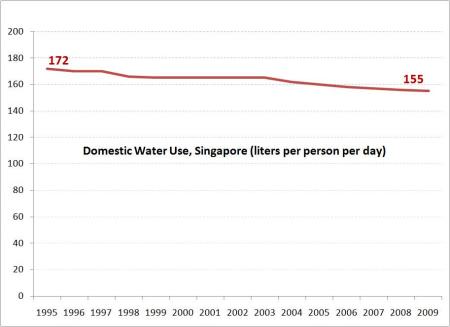

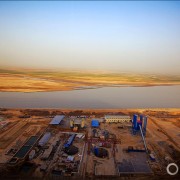
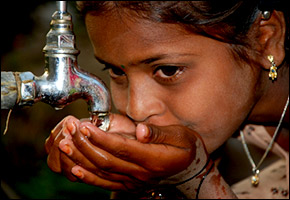
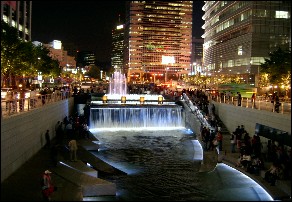

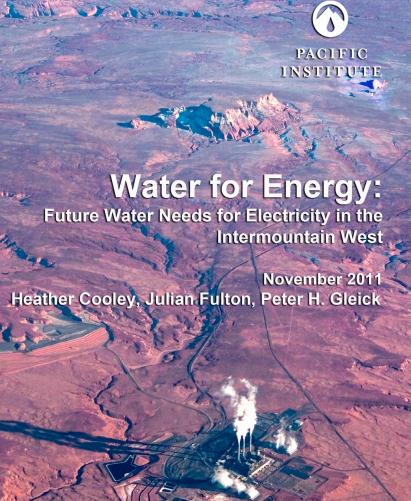


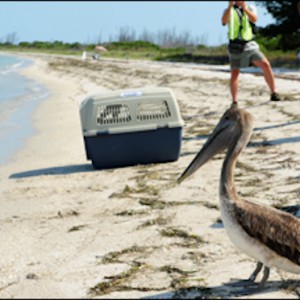
Comments are closed.